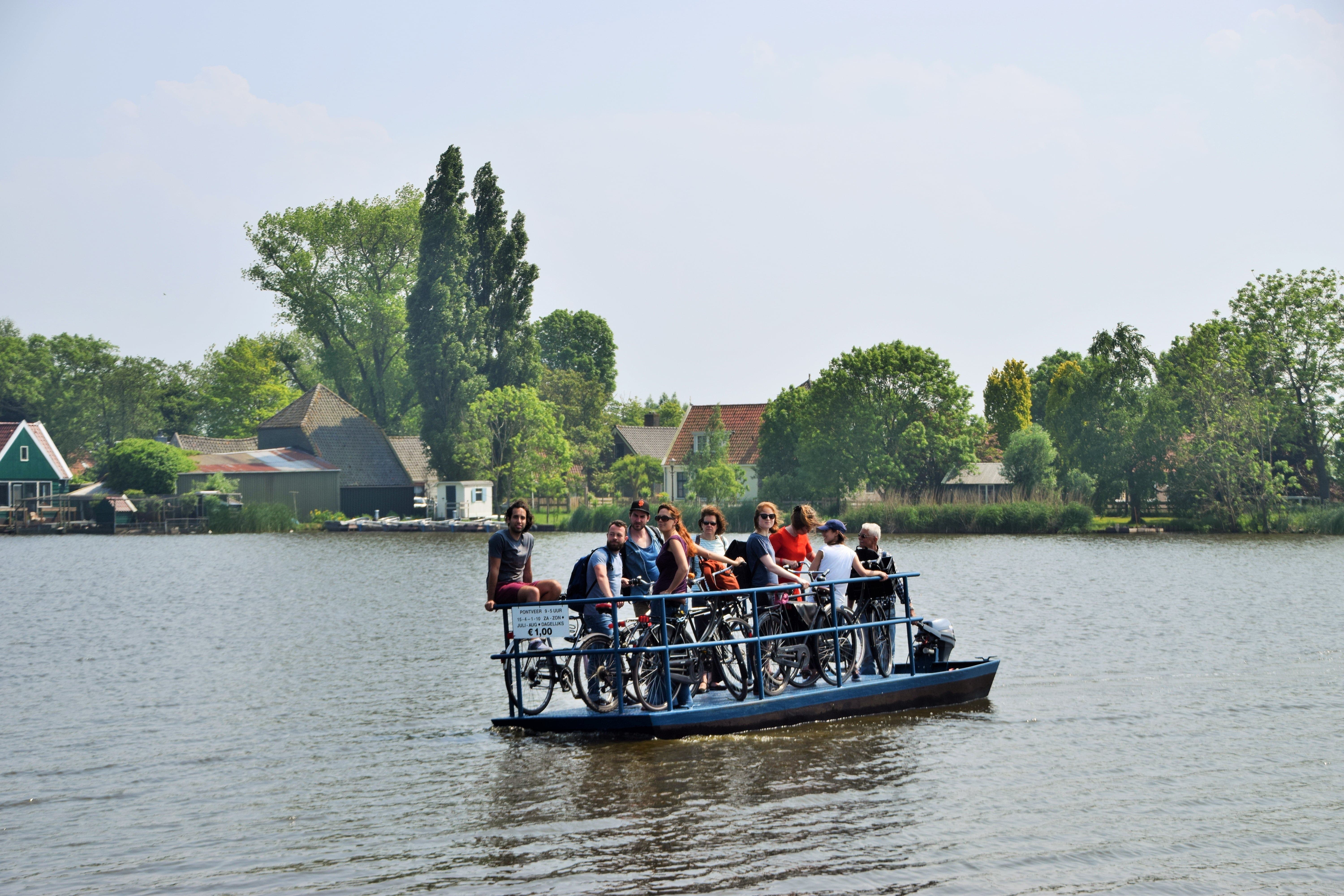Photo from Field Trip “Waterland”
Anyone who’s heard anything about the Netherlands knows that Dutchies love their fietsen (bicycles). They take them to work, to the supermarket, on nights out (when they’ve had a little too much to drink), and they carry all their kids on them too.
When Dutchies say “Oh, op die fiets” (Oh, on that bike)… We are actually not talking about cycling, we are talking about a certain way something is done… (I know, pretty confusing!).
There are many written and unwritten rules which could make or break your bicycle riding experience. It can be quite frustrating to locals (and believe me, they will let you know) to go about their daily lives when visitors don’t take the time to get acquainted with these rules, so here are some things you should know:
1. Biking (in cities in the Netherlands) is in many cases faster than using a car or public transportation (buses)
Yes, you read that correctly! According to the Dutch Centraal Bureau voor de Statistiek (CBS), biking to your destination in Amsterdam is on average 5% quicker than taking a car. In Amsterdam alone, there is more than 500 km of bike lanes available to bikers! It should really come as no surprise that there is an average of 1.3 bikes per inhabitant of the Netherlands. Seeing as the country is so flat it may feel like biking here is no effort at all; in reality, biking for 30 minutes here will allow you to eat a Dutch Kroket guilt-free (as it burns the same amount of calories).
2. Biking for Dummies 101: here’s what you should really know
The first rule is to remember that people (unfortunately) do not mind readers: just like cars have blinkers, cyclists need to signal their intentions so that other cyclists (and cars, and trams, and scooters, you get it) know what your next move will be. In movies, bumping into strangers may sometimes lead to dates. In the Netherlands (on a bike), it will probably lead to a hospital visit. You should always signal using your hands (by, for example, pointing) when you are about to turn or stop/pull over. Do not forget you do not have mirrors on your bicycle, so you should use those pretty eyes of yours to look around. If there is someone behind you (or passing you) and if you do not signal, someone will crash into you. Try to maintain your speed while you are biking, which does not apply if you are overtaking someone. You should always keep to the right unless you are overtaking. Do you like spending your money wisely? I do too! So make sure your lights are always functioning properly: not having a yellow/white front light and a red backlight will lead to a fine of 55€.
3. Amsterdam (and any other big Dutch city) can be “bicycle chaos”: make sure you feel confident biking before adventuring yourself
If the last time you rode on a bike was 5 years ago, I’d highly recommend you do so again somewhere other than a big city for the first time before venturing into the “bicycle jungle.” For locals, bikes are a method of transportation more than anything else, and you’ll find people will easily get impatient (which can lead to accidents). Keep in mind that while officially you may bike in “twos” (next to a friend for example) this should not be causing too many problems in traffic.
4. Bicycle theft is the single most common crime in the Netherlands
And no, reporting your bike as stolen to the police will probably not help (sorry). Because of this, make sure you are always double locking your bicycle (using the built-in locks most bikes have and an additional chain). Preferably, use the chain to lock your bike to a friend’s bike or something like a railing or a post. 250,000 bicycles end up in the Amsterdam canals each year, so try to avoid contributing to this number. Also, try to remember where you’ve parked your bike (by, for example, taking a picture) or you may end up losing it (especially on a night out, trust me).
5. Ditch those headphones and be alert!
It can be super tempting to put on headphones and be distracted while you are biking, but especially if you are not very familiar with both biking and the city you are in this can be very dangerous. You’ll need to watch out for people, trams, buses, scooters (these are so dangerous in Amsterdam!) and many other obstacles so pay attention! Did you know it is actually very easy to get your wheel stuck in tram tracks? It can be painful, uncomfortable, and especially dangerous (speaking from experience here).
6. Know where you can (and cannot) leave and take your bike
Keep an eye out for areas that have signs where you cannot park your bicycle (these can typically be found in front of certain stores or cafés). Authorities are allowed to remove bicycles that are not parked correctly, and trust me it is a pain to get them back! There are certain areas of the city (especially shopping areas) where cycling is forbidden and you have to walk with your bicycle (there will also be signs pointing this out). If you get caught, you will have to pay a fine. You are allowed to take your bike in trains under certain conditions and at certain times.
Veel fiets plezier! (Have fun cycling!)
Curious about more typical things about the Dutch and the Netherlands? Ri-direction is an excellent source of information for internationals to learn about Dutch habits and culture.
